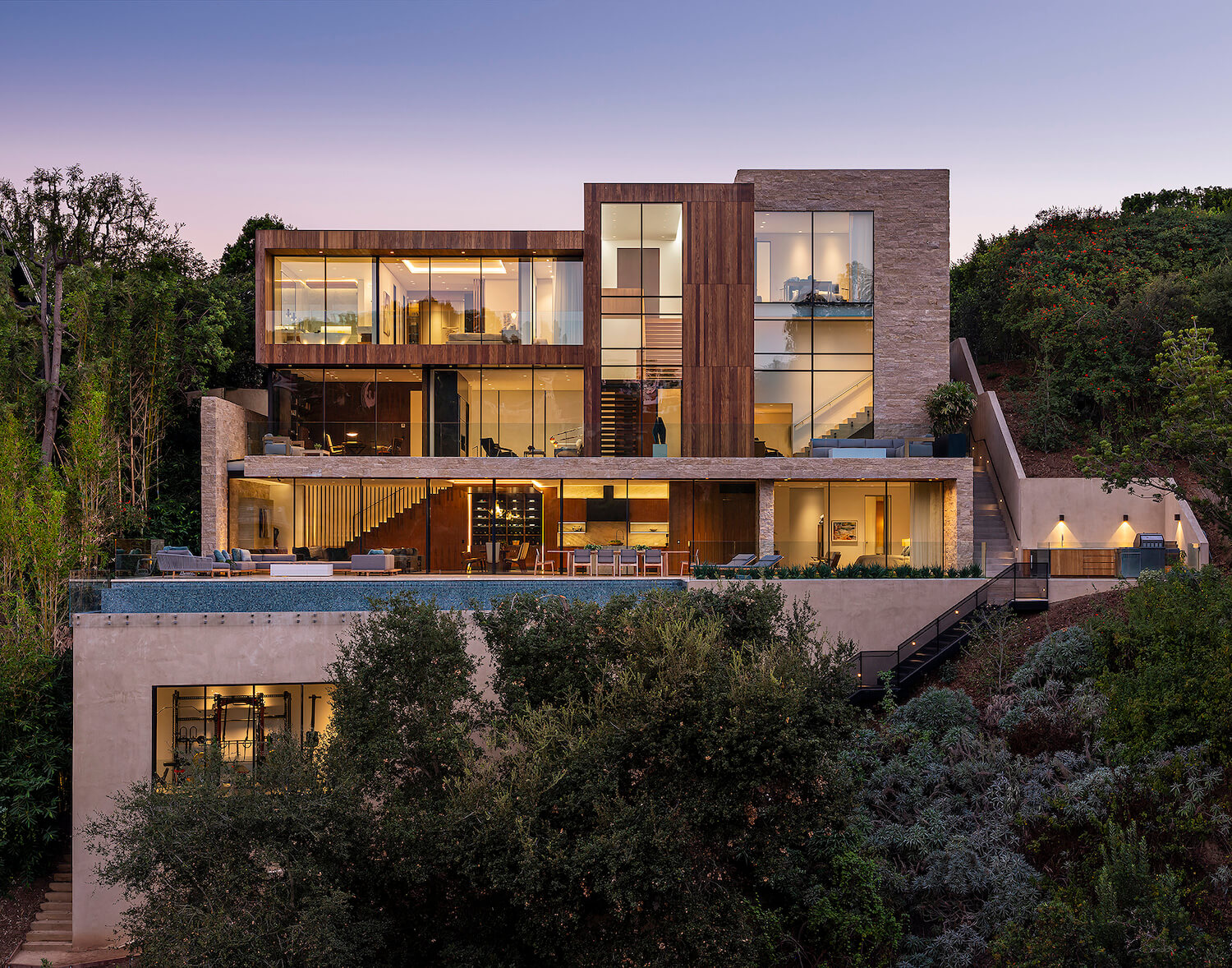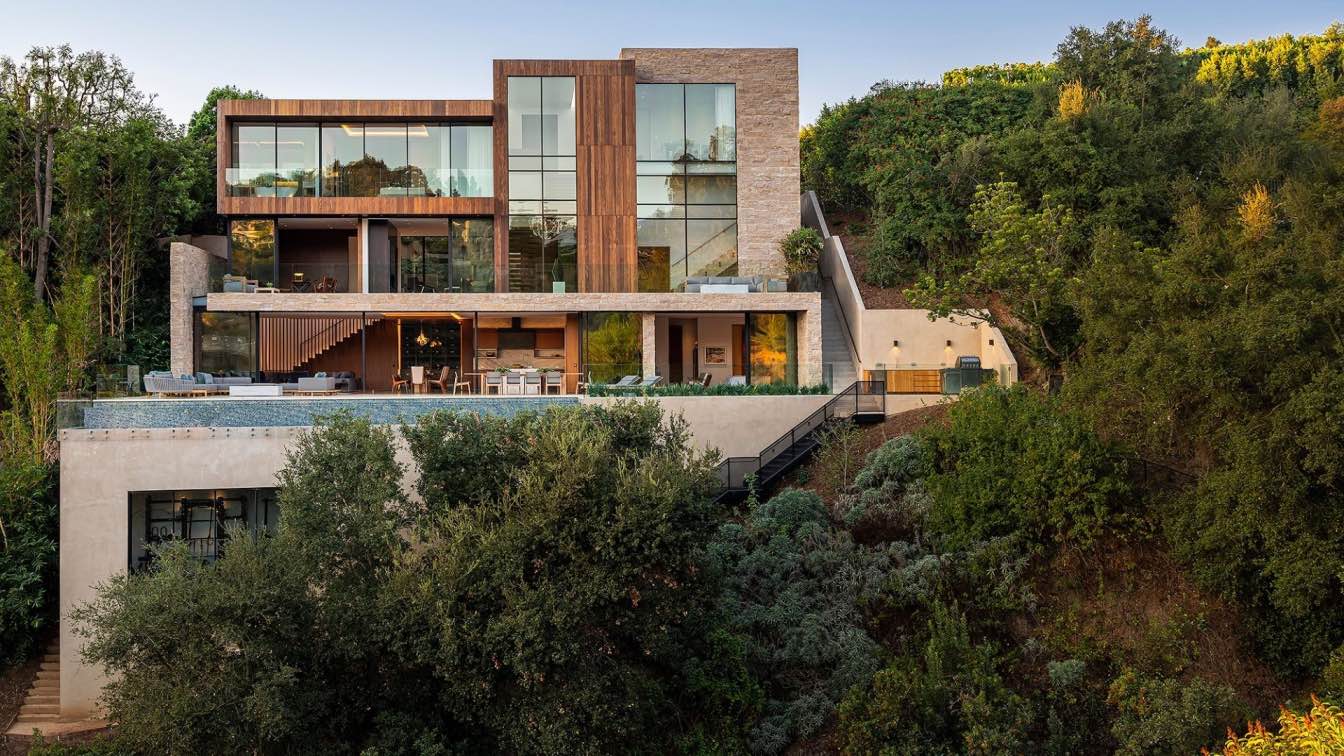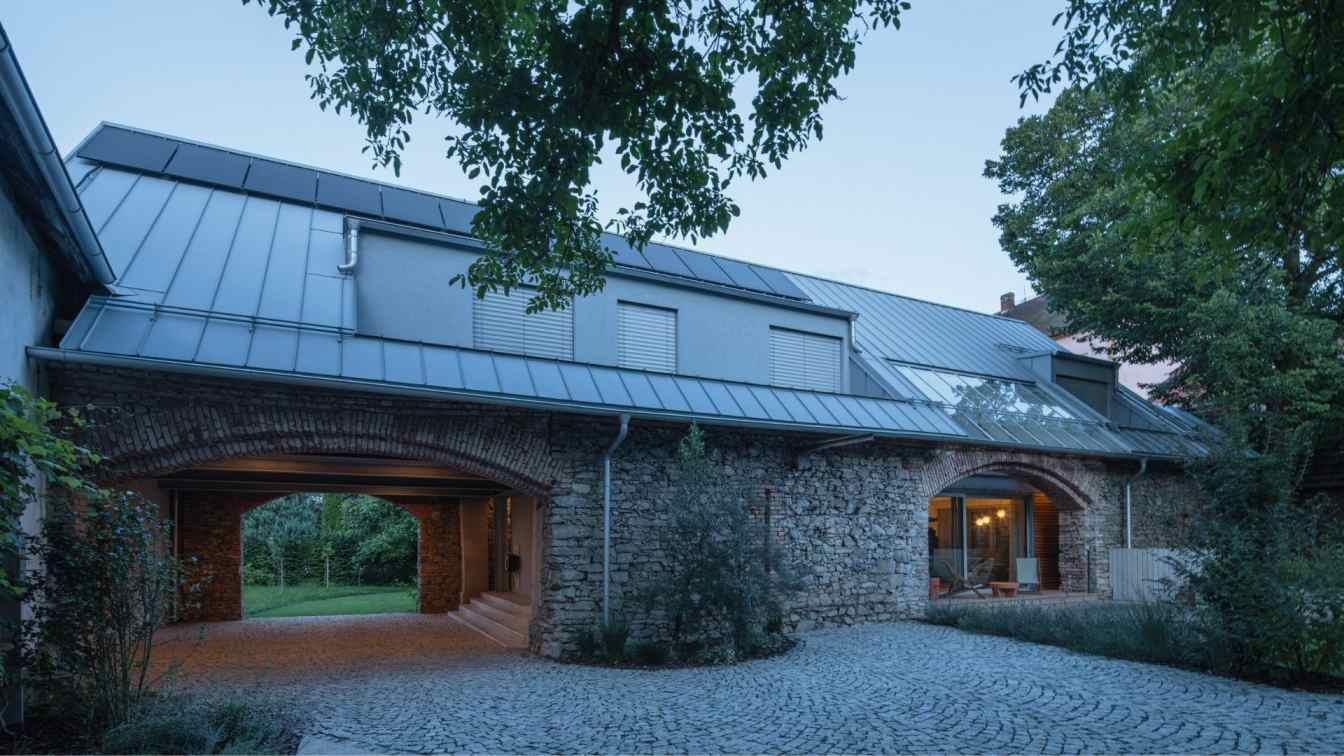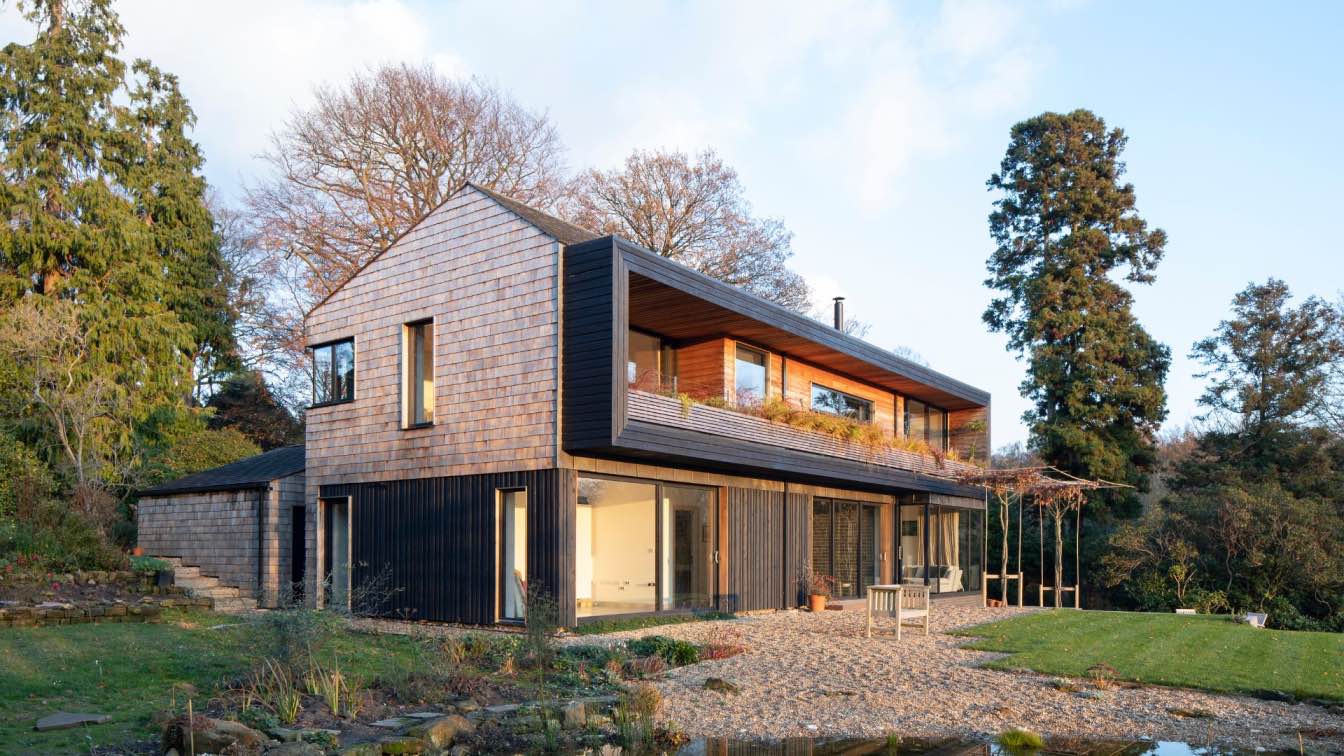ShubinDonaldson: Set into a steep hillside of Sullivan Canyon in Pacific Palisades, the San Remo Residence organizes stacked volumes toward the North with panoramic views of the natural landscape and the Getty beyond. The parti of the house is composed of two vertical and horizontal volumes on a stone limestone plinth, rooted into the rugged hillside. Strong vertical and horizontal lines of wood and steel delineate the home's outline amongst the dense native flora that occupies the canyon, complimenting the wildness of nature's patterns.
The home's southern edge is pulled away from the property line and recessed to allow southern light to dive into the residence's entry-level and the main corridors. A five-foot module is vertically integrated and rhythmically defines the glazing system with horizontal mullions extending the lines of the upper floors to complete this diagrammatic score on the North and aligned with the Afromosia wood facade on the South.
 image © Manolo Langis
image © Manolo Langis
Program + Materials
The program is stacked, oscillating on each side of the main stair occupying a central volume clad in vertically slatted Afromosia wood. Set proud of the stair, the master-suite fills the long horizontal volume on the east with floor to ceiling glass and wrapped in Afromosia. The remaining bedrooms occupy the western vertical volume clad with split-face Limestone, which continues toward the south where the garage is located. The public spaces occupy the lower floors of the home. The main living, dining, and kitchen occupy the lower Limestone volume, which opens to the central patio and pool deck. A media room and office are located on the entry-level opening to a glazed courtyard on the south with an Afromosia plinth overhanging for sun mitigation. The entrance is recessed down a wide set of limestone steps and infilled with drought-tolerant plantings providing a courtyard protected from the exposed bend in the approaching road.
Elements + Details
With the house set into a steep north-facing hillside, solving for difficult light conditions deep in the living spaces was a central concern. Several unique solutions were utilized for pulling natural light into the stacked volumes, including a stair that acts as a light plenum running parallel to a glass entry facade on the south. Another tectonic move is located on the eastern side, where the ceiling plane of the bottom living room is pulled off the eastern stone wall, and a linear skylight is placed. Individual rooms such as mechanical spaces, closets, and a wine room are buried into the hillside utilizing the thermal mass as a performative feature.
 image © Manolo Langis
image © Manolo Langis
Circulation + Experience
A solid protective front is presented as one approaches the house via the main drive. A split-face limestone plinth defines the garage, while a horizontal band of vertical Afromosia hovers over the main entry. Entering the five foot-wide front door, one is located at the intersection of the two primary corridors. The first, a three-story tall volume, opens to the northern light housing the main stair, which accesses the garage and private bedrooms above. The horizontal corridor leads to the media room, office, and down to the living spaces below. Every space is oriented toward the north, taking every advantage of the site's unique canyon condition with floor to ceiling glass in both operable and on operable conditions. Moving down the southern stair to the living spaces below, an unobstructed space contains the living, dining, wine room, and kitchen. Glass sliders across the entire north wall invite the outside in over the patio deck and pool.
Conclusion
The San Remo residence is a unique form carefully crafted to fit into the narrow envelope and make the most from a difficult site. Where the canyon presents its difficult challenges buried into the hillside, the same conditions offer unique opportunities. Where the southern façade defends its edge, the north opens wide, holding the light and the views beyond like a baseball glove. With its simple and strong material pallet, the house offers harmony with the surrounding trees and shrubs and a rooted sense with the earth below. The oscillating program, the house nests its spaces, creating interlocking geometries in rich material composition.
 image © Manolo Langis
image © Manolo Langis
Did the project have unique site conditions?
Located in a steep topographic canyon the house was carefully crafted to fit into a narrow buildable area. The same difficult challenges presented by the canyon’s topography also provided unique opportunities, such as embedding individual rooms into the hillside to take advantage of the canyon’s thermal mass as a performative feature or orientating every space toward the north, taking every advantage of the site's unique canyon condition with floor to ceiling glass in both operable and on operable conditions.
What were the key challenges?
Some of the project’s key challenges in this project were its site, narrow envelope, and difficult lighting conditions.
What were the solutions?
In order to take advantage of the steep site’s narrow envelope, one of our solutions was to embed the project into the rugged hillside, allowing us to create a plinth where a parti of interlocking geometries contain the house’s programmatic needs. With the house set into a steep north-facing hillside, solving for difficult light conditions deep in the living spaces was a central concern. Several unique solutions were utilized for pulling natural light into the stacked volumes, including pulling away and recessing the home’s southern edge from the property line allowing southern light to dive into the residence's entry-level and the main corridors, a stair that acts as a light plenum running parallel to a glass entry facade on the south. Another tectonic move is located on the eastern side, where the ceiling plane of the bottom living room is pulled off the eastern stone wall, and a linear skylight is placed.
Key products used:
Vertically slatted Afromosia wood, Limestone, and floor to ceiling glass.















































About
ShubinDonaldson (SD) is led by partners Russell Shubin, Robin Donaldson, and Mark Hershman; with offices in Culver City, Santa Barbara, and Orange County and a total staff of 60. We are informed by modernism, craft, and our culture of experimentation. We respond to each client and site (or space) through an investigative design process, mining the tension between real-world constraints and art ...





